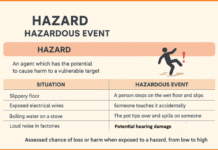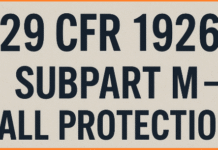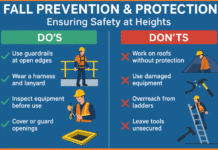Management Oversight and Risk Tree (MORT) is a systematic and structured analytical tool used for incident investigations and root cause analysis. It is similar to Fault Tree Analysis (FTA) but is specifically designed to assess the effectiveness of existing control measures and identify underlying management and organizational failures that contribute to accidents and incidents.
Contents
Understanding MORT
MORT is an advanced investigative tool that helps organizations evaluate the adequacy of their safety management systems by categorizing failures into different types of oversights and omissions. By systematically identifying weak points in an organization’s safety protocols, MORT provides valuable insights into how accidents occur and how they can be prevented in the future.
The Three Branches of MORT
MORT consists of three primary branches that help categorize failures:
- Specific Controls Oversights and Omissions
- Failures in direct hazard control measures.
- Lack of engineering controls, procedural safeguards, and protective measures.
- Insufficient enforcement of existing safety protocols.
- Management System Oversights and Omissions
- Inadequate leadership, guidance, and supervision.
- Poor resource allocation for safety measures.
- Insufficient training and failure to address known hazards.
- Assumed Risks
- Risks that were accepted without adequate analysis.
- Organizational decisions that tolerated certain hazards without mitigation.
- Complacency regarding warning signs and near misses.
Key Factors: Oversights and Omissions
MORT identifies two primary types of failures:
- Oversights: These occur when an organization fails to provide necessary supervision, guidance, or resources. Other examples include inadequate training programs and failure to address known hazards.
- Omissions: These refer to ignoring warning signs, neglecting risk control measures, and failing to investigate near misses effectively.
Steps in the MORT Process
The MORT methodology follows a structured approach to incident analysis:
- Define the Accident or Incident:
- Clearly describe the event under investigation.
- Document the sequence of events, environmental factors, and relevant conditions.
- Develop the MORT Diagram:
- Construct a detailed visual representation of the incident.
- Categorize failures into management system errors, human errors, hardware malfunctions, and environmental factors.
- Analyze the MORT Diagram:
- Examine each element to identify root causes.
- Focus on management and organizational issues that contributed to the event.
- Highlight areas where safety systems failed or were inadequate.
The Goal of MORT
The ultimate aim of MORT is to understand the complex interplay of factors that lead to accidents. By systematically analyzing these factors, organizations can:
- Enhance safety management practices.
- Improve risk assessment procedures.
- Strengthen existing control measures to prevent future incidents.
MORT is a valuable tool in safety management and incident investigation. It provides a structured approach to identifying oversights and omissions in an organization’s risk management system. By using MORT, organizations can develop a proactive approach to safety, reducing the likelihood of accidents and ensuring a more resilient safety culture.





